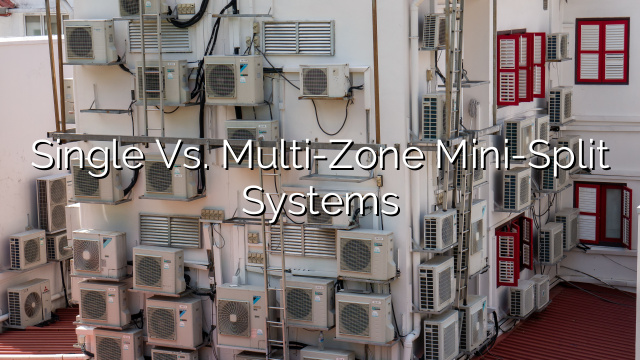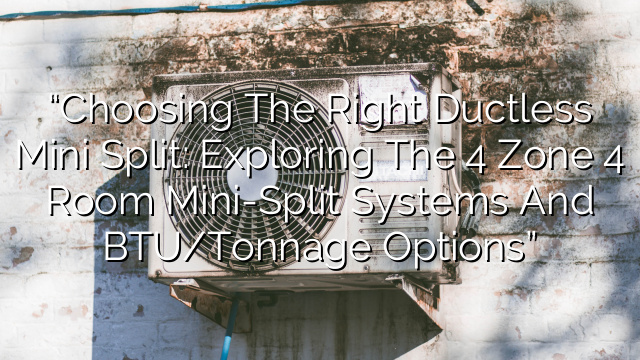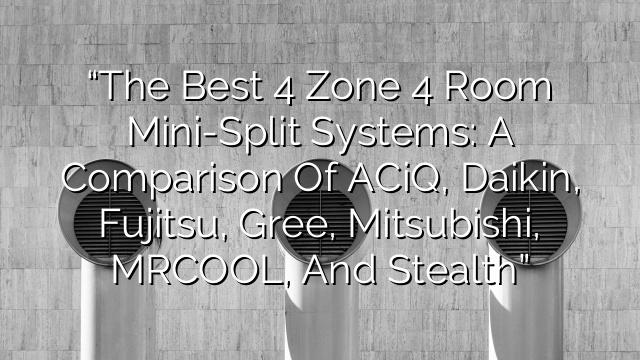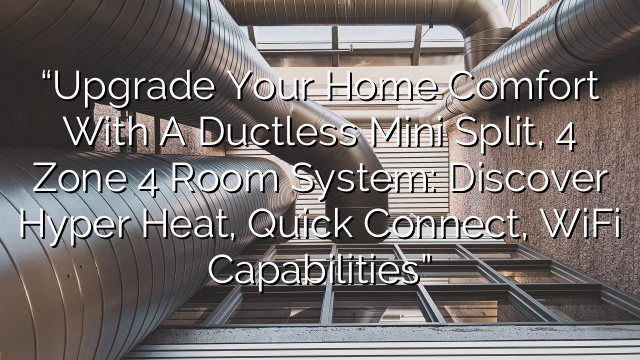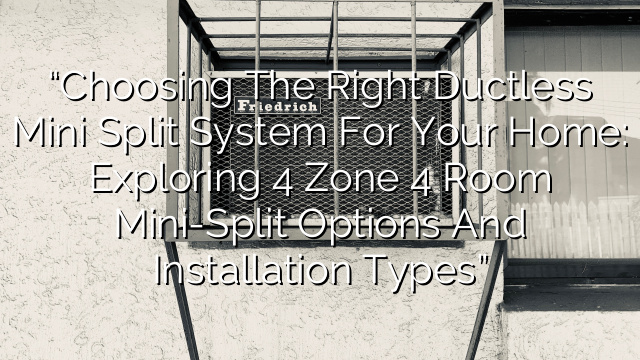Introduction
When it comes to heating and cooling your home, there are many different options to choose from. One popular choice is a mini-split system, which offers energy-efficient and zoned heating and cooling. Within the mini-split system category, there are two main types to consider: single-zone and multi-zone. In this blog post, we will compare the two options to help you decide which one is best for your needs.
Definition of Single-Zone and Multi-Zone Mini-Split Systems
Single-Zone Mini-Split Systems: A single-zone mini-split system consists of one outdoor unit and one indoor unit. This system is designed to heat or cool a single room or area in your home. It provides targeted heating and cooling for a specific space.
Multi-Zone Mini-Split Systems: On the other hand, a multi-zone mini-split system consists of one outdoor unit and multiple indoor units. This system allows you to heat or cool multiple rooms or areas in your home simultaneously. Each indoor unit can be controlled independently, providing customizable comfort throughout your home.
Installation and Cost
When it comes to installation, single-zone mini-split systems are generally easier and quicker to install compared to multi-zone systems. This is because single-zone systems require only one indoor unit to be installed, while multi-zone systems require multiple indoor units to be mounted in different areas of your home. The complexity of the installation process can affect the overall cost of the system.
Typically, single-zone mini-split systems are less expensive upfront compared to multi-zone systems. This is because multi-zone systems require more indoor units and additional components to allow for multiple zones of heating and cooling. However, it’s important to consider the long-term energy savings and potential cost benefits of a multi-zone system, especially if you plan to heat or cool multiple areas of your home regularly.
Flexibility and Customization
One of the major advantages of multi-zone mini-split systems is the flexibility and customization they offer. With a multi-zone system, you have the ability to control the temperature in each zone independently. This means that you can have different temperatures in different rooms or areas of your home at the same time, based on individual preferences and occupancy. For example, you can set a higher temperature in unused rooms to save energy while keeping the main living areas cool.
In contrast, single-zone mini-split systems provide heating and cooling only to the area where the indoor unit is installed. This can limit your ability to customize the temperature in different rooms or areas of your home separately. If you have varying heating and cooling needs throughout your home or want more control over individual zones, a multi-zone system may be the better option.
Energy Efficiency
Both single-zone and multi-zone mini-split systems offer energy efficiency compared to traditional HVAC systems. However, there are some factors to consider when it comes to efficiency.
Single-zone mini-split systems are more energy-efficient when they are used to heat or cool only the area where the indoor unit is installed. This is because the system is not using energy to condition unoccupied areas of your home. If you primarily need heating or cooling in a single room and don’t have a need for zoned comfort, a single-zone system may be the more efficient option for you.
On the other hand, multi-zone mini-split systems allow you to heat or cool multiple rooms at the same time, which can be more efficient than using multiple single-zone systems. For example, if you have several rooms that need to be conditioned regularly, a multi-zone system can help you achieve energy savings by reducing the overall workload on the system. Additionally, some multi-zone systems offer advanced features like occupancy sensors and smart thermostats, which further optimize energy efficiency.
Conclusion
Ultimately, the decision between a single-zone and multi-zone mini-split system depends on your specific needs and preferences. If you only require heating or cooling in a single room or area of your home, a single-zone system may be the most cost-effective and efficient choice. However, if you want the flexibility to heat or cool multiple rooms independently, a multi-zone system provides customizable comfort and potential energy savings.
Consider factors like installation complexity, upfront cost, flexibility, customization, and energy efficiency when making your decision. If you’re unsure which option is best for your home, consulting with an HVAC professional can help you evaluate your specific requirements and find the right solution for you.

